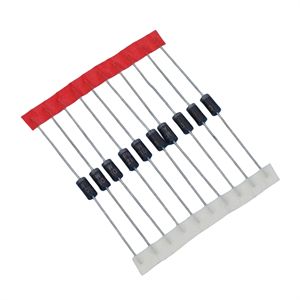Date:2024-09-23 Categories:Product knowledge Hits:432 From: Guangdong Youfeng Microelectronics Co., Ltd(YFW)
Transient suppression diode is a special diode used to protect circuits, which can quickly suppress overvoltage and protect loads. Under normal operating conditions, the transient suppression diode is an open circuit and will not have any impact on the circuit. However, in the case of overvoltage, the transient suppression diode will quickly become conductive, guiding the overvoltage to the ground line and protecting the load.
However, despite the excellent overvoltage protection capability of transient suppression diodes, there will still be a certain residual voltage during steady state. Residual voltage refers to the small voltage that still exists at both ends of a transient suppression diode when it is operating normally. Below is a detailed explanation of the principle behind the generation of residual voltage in transient suppression diodes.
Firstly, it is necessary to understand the structure of transient suppression diodes. It consists of a PN structure, which can be seen as a diode composed of two semiconductor bodies made of different materials. Usually, the P region is highly doped and has good conductivity, while the N region is less doped and has higher resistance.
When a voltage is applied in the forward direction of the transient suppression diode, carrier injection occurs in the boundary region between the two materials, resulting in current generation. When the applied voltage exceeds the breakdown voltage of the transient suppression diode, the diode begins to conduct, directing the overvoltage to the ground.
However, during the process where the external voltage gradually decreases and returns to normal operating voltage, the transient suppression diode may not immediately return to a fully closed state. This is determined by the PN junction characteristics. Due to the smaller resistance of diodes with PN junctions under forward voltage, residual charges will gradually be discharged as the reverse voltage gradually decreases.
The magnitude of residual voltage is related to the material and structural parameters of the transient suppression diode, mainly including the doping concentration, material characteristics, and diode design of the P and N regions. The highly doped P region can reduce the on resistance under forward voltage, but it will increase the residual voltage. On the contrary, appropriately reducing the doping concentration in the P region can reduce the residual voltage, but it can also increase the on resistance.
In addition, the magnitude of the residual voltage of the transient suppression diode is also related to the rate of change of the external load power supply voltage. When the external voltage changes rapidly, the transient suppression diode may not have sufficient time to recover to the off state during the current transition, which can also lead to an increase in residual voltage.
In summary, the residual voltage of transient suppression diodes is determined by factors such as PN junction characteristics, materials, and structural parameters. Appropriate measures such as material, structural design, and manufacturing processes can be taken to control the residual voltage of transient suppression diodes.

Previous: Classification, Structure, and Principle of MOSFET
Next: Method for determining MOS transistor parallel connection